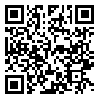Volume 7, Issue 2 (17 2007)
ijdld 2007, 7(2): 135-149 |
Back to browse issues page
Download citation:
BibTeX | RIS | EndNote | Medlars | ProCite | Reference Manager | RefWorks
Send citation to:



BibTeX | RIS | EndNote | Medlars | ProCite | Reference Manager | RefWorks
Send citation to:
Fakhrzadeh H, Ghotbi S, Larijani B. THE ROLE OF HOMOCYSTEINE IN HEALTH AND DISEASE. ijdld 2007; 7 (2) :135-149
URL: http://ijdld.tums.ac.ir/article-1-5069-en.html
URL: http://ijdld.tums.ac.ir/article-1-5069-en.html
1- , emrc@sina.tums.ac.ir
Abstract: (7228 Views)
High plasma homocysteine is identified as an important risk factor for cardiovascular disease. Epidemiological studies have shown that increased plasma homocysteine is related to a higher risk of coronary heart disease, stroke and peripheral vascular disease. Homocysteine may have an effect on atherosclerosis by damaging the inner lining of arteries and promoting blood clots .Folic acid and other B group vitamins help break down homocysteine in the body and folate fortification of foods reduces the average homocysteine level in the population. Low blood levels of folate are also linked with a higher risk of fatal coronary heart disease and stroke. Homocysteine levels are strongly influenced via diet, as well as via genetic factors. Many common genetic disorders and problems (such as vitamin deficiency) adversely affect the metabolism of homocysteine. Common causes of a high homocysteine level include dietary deficiency of folate and B group vitamins, hypothyroidism, kidney disease, psoriasis, and some medicines. Clinical trials to date have not provided consistent evidence that lowering homocysteine levels reduce strokes, heart attacks and other cardiovascular events notwithstanding it is recommended to lower a high homocysteine level because it is a risk factor for heart disease. Homocysteine abnormalities also contribute to birth defects and dementia and folic acid supplementation in the pre-conceptual period is effective in preventing recurrent and primary neural tube defects.
Type of Study: Research |
Subject:
General
Received: 2007/08/21 | Accepted: 2008/02/12 | Published: 2013/10/15
Received: 2007/08/21 | Accepted: 2008/02/12 | Published: 2013/10/15
Send email to the article author
| Rights and permissions | |
 |
This work is licensed under a Creative Commons Attribution-NonCommercial 4.0 International License. |





